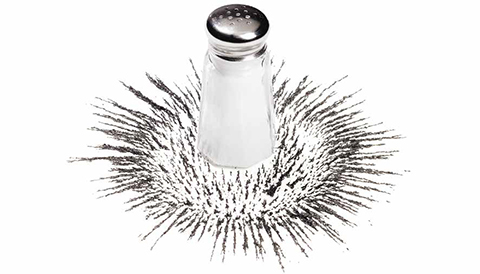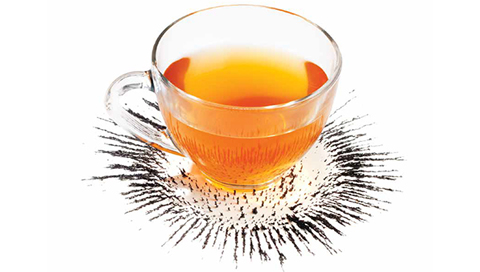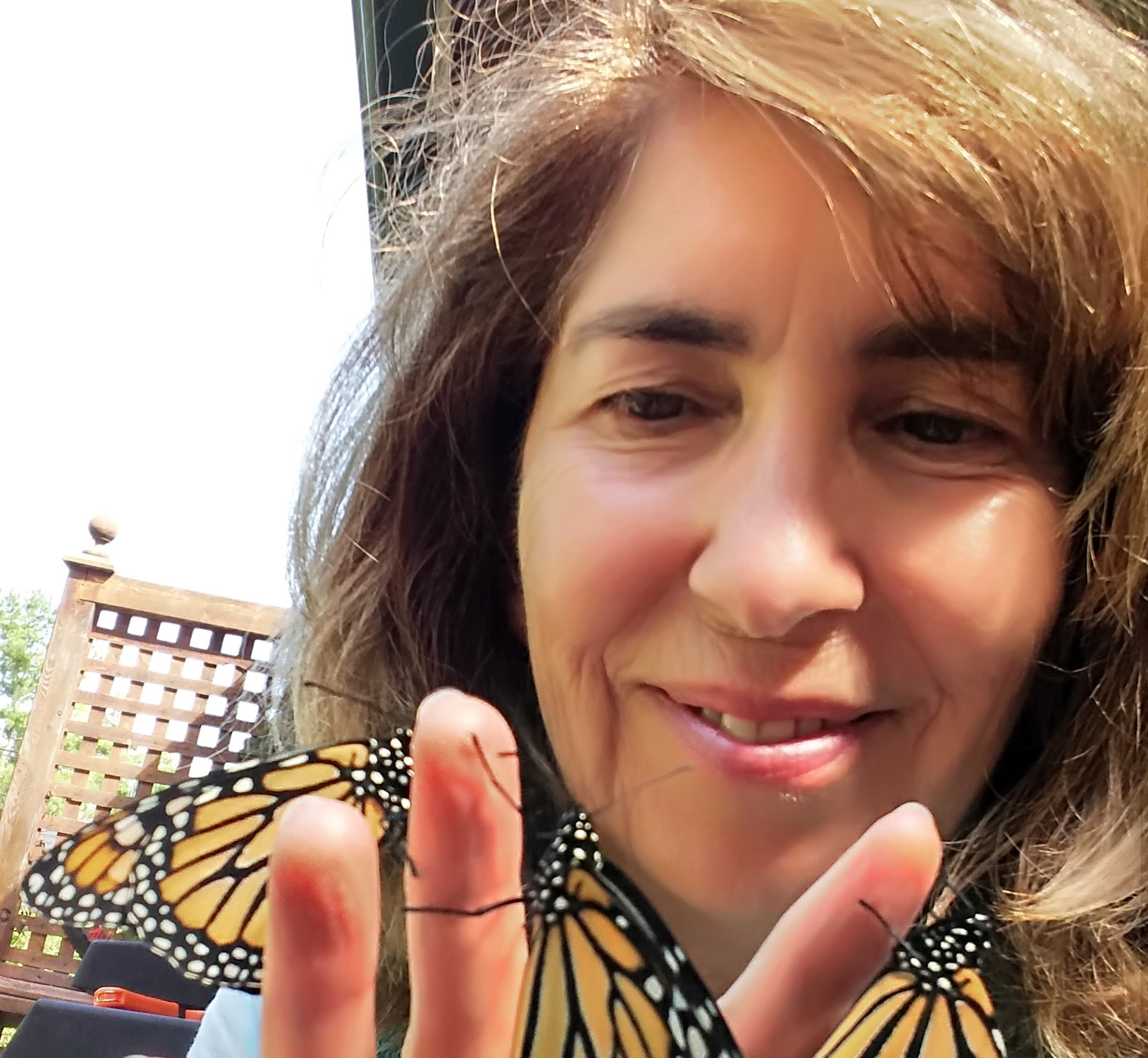Take a mental tour through your kitchen cupboards and fridge, and you’ll likely find the usual staples: breakfast cereal, flour, milk, salt. But only when you look more closely at the package labels will you notice the tiny, hidden extras that have been added. The cereal is fortified with iron and B vitamins, the flour with folic acid, the milk with vitamin D, the salt with iodine. In our society, focused as we are on calories, fats and carbs, we may scarcely be aware of these smaller micronutrients. Yet they have a crucial role to play in preventing devastating deficiencies that can cause disease and death.
Now consider the food supplies of a family subsisting in a developing country, perhaps in a rural area, desert or jungle. Almost everything is grown or homemade. The people may have enough to eat, but the food may have been grown in depleted soil and the diet may lack variety. We might think that a natural, unprocessed diet is healthy, but if essential micronutrients are missing, this creates a different kind of malnutrition – a hidden hunger. Fortifying homegrown foods with micronutrients is impossible, as they undergo no processing. But in many areas, especially in South Asia, there are two candidates for fortification, two items almost everyone buys rather than growing: salt and tea.
It’s these two everyday foods that are the focus of the work by Levente Diosady (pronounced Dee-o-shaw-dee), professor emeritus in the department of chemical engineering and applied chemistry. Having successfully developed a way to add iron to salt, he is now studying methods for adding iron to tea. The implications are huge. While there are not as many people dying of starvation anymore, Diosady says, “They now die of micronutrient deficiencies.”
The most common is iron deficiency, which affects a staggering 30 per cent of the world – two billion people – and is a leading cause of disability and premature death. The World Health Organization calls iron deficiency a public health condition of epidemic proportions, causing nearly 700,000 deaths of infants and new mothers every year, producing ill health in millions of others, and dramatically lowering school and work performance by up to 40 per cent. People who are weak, ailing and lethargic have little hope of ever climbing out of poverty.
Those most likely to be deficient in the mineral are the ones who need the most and get the least: women. “In many developing countries, women’s status is lower than men’s, so their quality of food is lower,” Diosady says. The best sources of iron are meat, poultry and fish, but these foods are often costly and scarce. “If there’s any meat on the table, the woman is not the one who’s going to get it.” In addition, some regions, such as South India, are largely vegetarian. While iron does exist in legumes and some vegetables, it’s less readily absorbed than from animal sources. For instance, we absorb very little iron from spinach. (“Popeye is fooling you,” Diosady says.) Since iron is necessary for making hemoglobin, the protein in red blood cells that carries oxygen, women who lose blood monthly need more than twice the iron of men. A pregnant woman, whose blood supply increases dramatically, needs more than triple the amount. Iron deficiency leads to much higher risks of hemorrhages, stillbirths, premature delivery, babies who fail to thrive and children who never reach their full potential.
But although pregnant women in many developing countries don’t eat a high-quality diet, one thing they do get daily is tea. Tea is inexpensive, safe, easily available and an integral part of the social and cultural life of millions of families. This makes the humble drink a good potential target for iron fortification. Diosady’s efforts in this area are gaining international attention. In July, he was the lone Canadian among 22 global innovators who received grants from Saving Lives at Birth: A Grand Challenge for Development. This partnership, which asks for groundbreaking, inexpensive, workable ideas to prevent infant and maternal deaths and this year received more than 400 submissions, includes the Bill & Melinda Gates Foundation, the U.S. Agency for International Development, the U.K.’s Department for International Development, the Norwegian Ministry of Foreign Affairs, and Grand Challenges Canada, funded by the Government of Canada. Diosady received a $250,000 seed grant to continue his research into iron-fortified tea. Peter Singer, CEO of Grand Challenges Canada and a U of T professor of medicine, recalls the enthusiasm around Diosady’s presentation in Washington D.C. “He’s an archetypal inventor with a change-the-world attitude.”
Diosady, 70, hadn’t set out to change the world through tea. In fact, he hadn’t set out to work with food at all. “Some of these things happen by serendipity, by luck, by divine design – I’m not sure which,” he says. Growing up in Budapest, Hungary, he knew from the age of five that he wanted to be a chemical engineer like his father. Diosady Senior designed large industrial plants in Hungary and eventually, after moving his family to Toronto in 1957, became chief scientist for Ontario’s ministry of the environment. While still a high-school student, Diosady Junior began his association with U of T by starting a summer job at the Banting Institute. He completed all three of his degrees at U of T, including a doctorate in chemistry, and joined a Saskatoon-based engineering firm that was later bought out by a food company. “I had to learn about food in a big hurry,” says Diosady, who was researching trans fats in the 1970s, long before most people had heard of them.
When a former supervisor called him back into academia at U of T in 1979, Diosady began working in food engineering. One day his post-doc introduced him to Venkatesh Mannar, then a consultant to UNICEF on salt iodization. Mannar’s family had been producing salt in India for five generations, and his ancestors were part of Mahatma Gandhi’s movement that helped instigate India’s freedom from colonial rule. “I was fascinated with the idea of using salt, a universally consumed condiment, as a vehicle to deliver micronutrients,” says Mannar, who is now a chemical engineer and executive director of the Micronutrient Initiative, an Ottawa-based NGO with offices throughout Asia and Africa. Fortifying salt with iodine was one of the great public health successes of the 20th century, Mannar says, drastically slashing iodine deficiency disorders such as thyroid problems in adults and mental disabilities in children. Iodized salt now reaches more than 70 per cent of the world. Making it is simple and inexpensive, involving spraying a solution of potassium iodide or iodate onto the salt.
Mannar talked to Diosady, who now had a reputation as a pre-eminent food engineer, about the possibility of adding iron to salt along with iodine, making double-fortified salt. It made perfect sense: the amount of salt people eat is surprisingly uniform, the addition of iron would cost only pennies per person per year, and unlike iron supplements concentrated in pill form, iron in food does not cause constipation. “We thought double-fortifying salt with iron and iodine should be reasonably easy,” Diosady recalls. “But we did a few experiments and decided it wasn’t that easy at all.”

The problems were many. The added iron reacted with the iodine, causing the iron to disappear. Also, certain types of iron turned the salt canary yellow or dark brown, or made it smell like the water from rusty pipes. It quickly became obvious that the iron needed a physical barrier around it. Diosady developed a microencapsulation technique that starts with salt-sized particles of a very dark-coloured type of iron called ferrous fumarate, which is absorbed more easily by the body than other types of iron. The amount of this iron was set at 30 per cent of the average person’s daily iron requirement, or enough to lift people out of the danger zone. It wasn’t set at 100 per cent, because this could cause people who eat a lot of meat to get too much iron, which can cause liver and heart damage.
Because these dark particles appeared unappetizing in the white salt, Diosady developed the idea of colouring them with minute amounts of titanium dioxide, a white compound often used in toothpaste, pill coatings and nondairy creamers, to make the particles much less noticeable. (While safety concerns have been raised about titanium dioxide, especially with regard to inhaling large amounts of its dust, there is no scientific evidence that ingesting it is harmful to human health. Diosady says, “The amount we put in salt is less than one-thousandth of the allowed limit in Canada.”)
Then, to ensure that moisture can’t get in even in very humid climates, the particles are coated with tiny amounts of hardened soybean oil (it’s 100 per cent vegetarian, to comply with many religious and cultural laws). These particles are then mixed in with regular iodized salt, making a product that’s doubly fortified. When this salt is added to soup or other warm food, the coating on the microencapsulated particles melts, releasing the precious iron inside and allowing the body to absorb it. Early in their research, until they got the coating just right, Diosady and his team had some unexpected results, such as the time the salt turned a warm banana dish bright blue.
“This is what double-fortified salt looks like,” says Diosady excitedly, taking down a small glass bowl from a shelf in his office in the basement of the Wallberg Building. The mixture looks very similar to ordinary salt that’s perhaps had some light-coloured pepper sprinkled in – those barely visible specks are the microencapsulated iron particles – and it tastes like regular salt.
Following lab trials in Toronto, field tests in 2008 delivered brilliant results. A study in Bangalore, India, showed a significant reduction in anemia rates among children who received double-fortified salt on a daily basis. These results suggest that iron-deficiency anemia could be eliminated in 1.6 million of the 5.4 million children who now receive double-fortified salt through their school meal. India wants to expand the initiative to all 300 million children enrolled in the country’s school lunch program.
Problem solved? Not quite. There are many places in the developing world where children don’t receive school lunches, or go to school at all. Nor does a school program reach parents, young women or any other family members. While double-fortified salt is now a proven strategy, it will take time to reach entire populations, so in the meantime, more sources of supplemental iron are needed. The clear choice is tea. Much of the developing world drinks it, and people drink a consistent amount, averaging two cups a day. So, Diosady reasoned, if salt and tea each provided an average of 30 per cent of the daily iron requirement, even those with only one source would be lifted out of anemia, and those with sources including fortified salt, fortified tea and ironrich foods such as meat would still be well within safe limits. (Even double the daily requirement is safe for most people, Diosady says.)
Diosady’s research into fortifying tea is still in the early stages, as technological obstacles are even more challenging than with salt. First, iron turns a cobalt-blue colour in tea. It may sound pretty, but Diosady says, “When combined with brown it’s an ugly-looking mess.” Second, iron binds with tannins, the healthy antioxidants in tea, and becomes unavailable to the body. As in salt, the iron must be encapsulated, but since people don’t eat tea leaves, there must also be a way for the iron to be released.
Diosady’s team includes fellow chemical engineering professors Yu-Ling Cheng, a drug delivery expert, and Edgar Acosta, a microemulsions specialist, as well as a host of graduate students and visiting professors from Mexico, Brazil, France, China, Iran, Sri Lanka, Chile and Canada. Based on the success of his salt research, Diosady hopes to have the tea project fully developed within five years, with a product available at a cost of two or three cents per person per year.
Diosady himself still works on his research every day, although he only goes into the lab a couple of days a week. He says he has no plans to retire. As for the prospect of improving the health of hundreds of millions of children in India, he takes a humble tone: “It’s very satisfying for a researcher sitting in Toronto who knows nothing about medicine.”
If successful, Diosady could be eligible for a further $2 million from Saving Lives at Birth to roll the tea project out into the field. It could prove a worthy investment: in 2012 the Copenhagen Consensus, an expert panel that studies the best ways for governments to spend aid and development money, put micronutrient fortification in the number one spot. It estimates that for every dollar invested in micronutrient fortification, the returns are between $7 and $39. “Professor Diosady’s research is impactful and inspiring,” says Cheng, director of U of T’s Centre for Global Engineering. “His work has already impacted millions of people, and not too many researchers can say that.”
Marcia Kaye (marciakaye.com) of Aurora, Ont., is an award-winning health writer.






